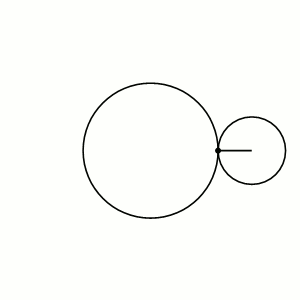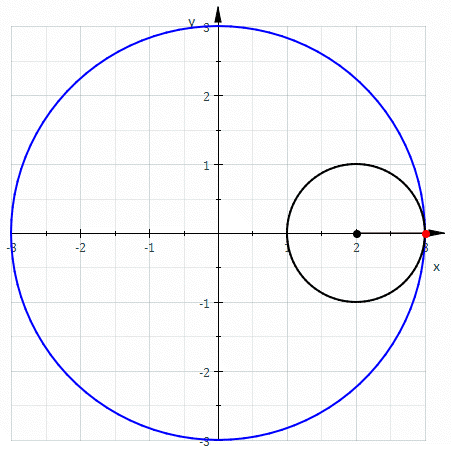Split Octonions and the Rolling Ball
Posted by John Baez
You may enjoy these webpages:
because they explain a nice example of the Erlangen Program more tersely — and I hope more simply — than before, with the help of some animations made by Geoffrey Dixon using WebGL. You can actually get a ball to roll in way that illustrates the incidence geometry associated to the exceptional Lie group !
Abstract. Understanding exceptional Lie groups as the symmetry groups of more familiar objects is a fascinating challenge. The compact form of the smallest exceptional Lie group, , is the symmetry group of an 8-dimensional nonassociative algebra called the octonions. However, another form of this group arises as symmetries of a simple problem in classical mechanics! The space of configurations of a ball rolling on another ball without slipping or twisting defines a manifold where the tangent space of each point is equipped with a 2-dimensional subspace describing the allowed infinitesimal motions. Under certain special conditions, the split real form of acts as symmetries. We can understand this using the quaternions together with an 8-dimensional algebra called the ‘split octonions’. The rolling ball picture makes the geometry associated to quite vivid. This is joint work with James Dolan and John Huerta, with animations created by Geoffrey Dixon.
I’m going to take this show on the road and give talks about it at Penn State, the University of York (virtually), and elsewhere. And there’s no shortage of material to read for more details. John Huerta has blogged about this work here:
* John Huerta, G2 and the rolling ball.
and I have a 5-part series where I gradually lead up to the main idea, starting with easier examples:
* John Baez, Rolling circles and balls.
There’s also plenty of actual papers:
- Robert Bryant, Élie Cartan and geometric duality, 1998.
- Andrei Agrachev, Rolling balls and octonions, 2006.
- Ilka Agricola, Old and new on the exceptional group G2, 2008.
- Aroldo Kaplan, Quaternions and octonions in mechanics, 2008.
- John Baez and John Huerta, G2 and the rolling ball, 2012.
So, enjoy!





Re: Split Octonions and the Rolling Ball
Nice Demo!
Don’t forget that if the point on the small circle radius is inside the small circle, you generate an epitrochoid. You are now half-way to the Wankel Rotary Engine. Thank you Felix Wankel and thank you Bernoulli brothers.